As Russia Executes More POWs and Rejects Vatican Peace Venue, Ukraine Strikes Weapons Factory While Massive Drone Swarms Target Kyiv in Nighttime Terror
Summary of the Day – May 23, 2025
In a day that laid bare Russia’s vision for Ukraine’s future, Foreign Minister Sergei Lavrov demanded any peace agreement include provisions preventing the election of pro-Western governments in Kyiv—essentially calling for perpetual Russian control over Ukraine’s political destiny. This imperial decree came as 390 Ukrainian prisoners returned home in the first phase of a historic 1,000-for-1,000 exchange, their gaunt faces and trembling hands telling stories of years in captivity. Meanwhile, Russian forces executed two more Ukrainian POWs near Pokrovsk, adding to the mounting evidence of systematic war crimes. As Ukraine struck a critical Russian weapons factory producing components for Iskander missiles, Moscow unleashed 175 drones and ballistic missiles against Ukrainian cities, turning Kyiv’s night sky into a battlefield of explosions and falling debris that left at least 15 civilians injured.
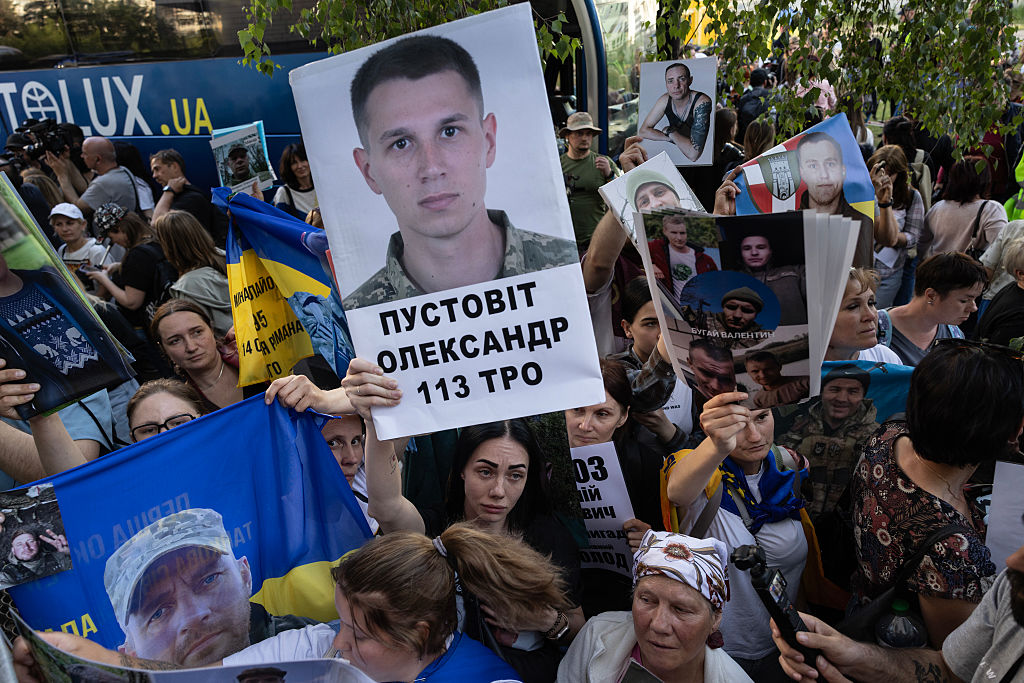
Ukrainian families of prisoners of war wait to see if their loved ones will be amongst the arrivals, in Chernihiv, Ukraine. Ukraine and Russia have pledged to exchange 1,000 prisoners of war from both sides over the coming days, following the first direct talks between the two delegations held in Istanbul on May 16. (Paula Bronstein / Getty Images)
The Imperial Edict: Lavrov Demands Eternal Russian Veto Over Ukraine’s Democracy
Sergei Lavrov unveiled Russia’s vision for Ukraine’s future on May 23: a nation forever barred from choosing its own path. Any peace agreement, he insisted, must include conditions preventing the “repetition of what brought putschists to power through a bloody revolution”—his twisted description of Ukraine’s 2014 Euromaidan protests that ousted pro-Russian president Viktor Yanukovych.
The demand represents an explicit call for regime change wrapped in the language of prevention. Lavrov reiterated Putin’s claim that Zelensky lacks legitimacy, suggesting Russia could negotiate with Ukraine’s parliament instead—deliberately misreading Ukraine’s constitution, which prohibits elections during martial law imposed by external aggression.
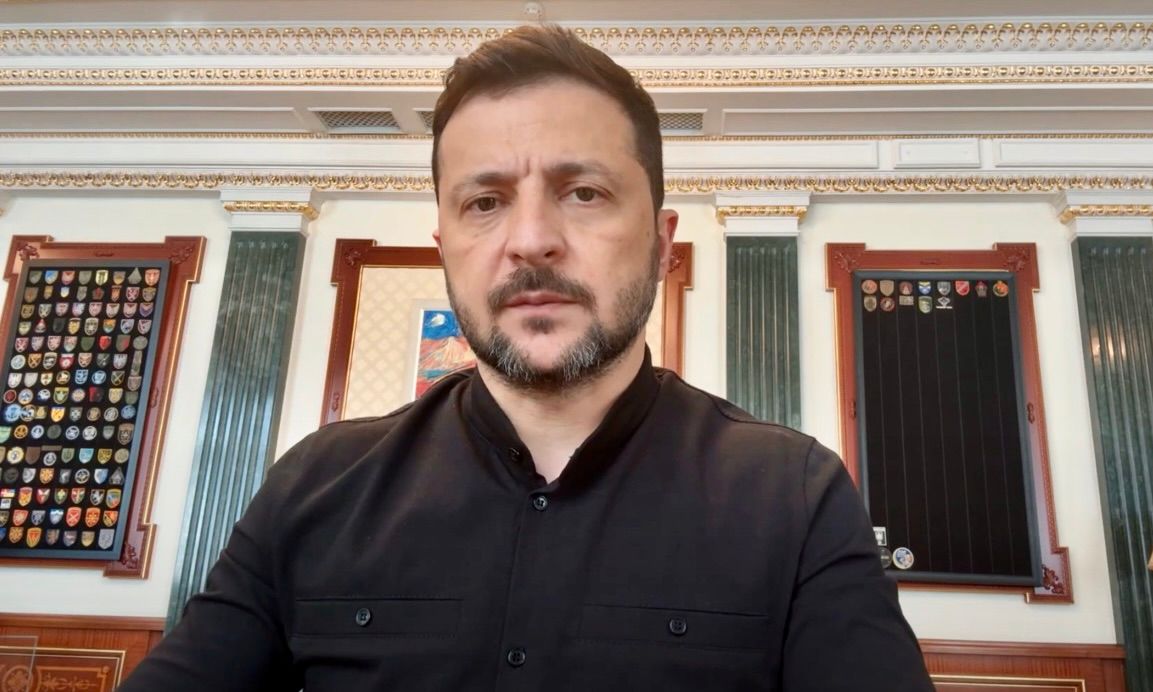
President Volodymyr Zelensky delivers his evening address in Kyiv, Ukraine. (Zelensky / Telegram)
This isn’t mere diplomatic posturing but a blueprint for perpetual subjugation. By framing any future pro-Western government as inheriting the “illegitimacy” of all Ukrainian governments since 2014, Lavrov creates conditions for Russia to declare any agreement non-binding at will. The foreign minister’s rejection of Trump’s Vatican venue proposal—claiming it would be “uncomfortable” for “two Orthodox countries”—adds religious overtones to political demands.
390 Souls Return: The First Wave of History’s Largest POW Exchange
“Not until I was back on Ukrainian soil” could Anton Kobylnyk believe he was truly going home. After three years in Russian captivity since his capture at Mariupol’s Azovmash plant, the soldier’s voice trembled as he described the moment of crossing into Ukraine. His mother’s tears on the phone—”It’s okay, Mom, I’m home”—captured the raw emotion of 390 such reunions.
The exchange, part of a 1,000-for-1,000 swap agreed in Istanbul, represents the largest prisoner exchange since Russia’s war began in 2014. Ukraine’s announcement specified 390 returned, while Russia claimed 270 soldiers and 120 civilians—a discrepancy that underscores the fog of war even in moments of cooperation.
At the exchange site, families clutched photos of those still missing, shouting names into crowds of returning soldiers. “No, I’m sorry, I haven’t seen him,” became a painful refrain. Soldier Kostiantyn, hands trembling as he held photos thrust at him by desperate relatives, explained the cruel arithmetic of captivity: “Even if I did… he might have changed so much, I wouldn’t recognize him.”
Execution in the Forest: Two More Ukrainian POWs Join the Ranks of War Crime Victims
Near Udachne, 12 kilometers from Pokrovsk, Russian forces added two more names to the growing ledger of executed prisoners. The Prosecutor General’s Office detailed how Russian troops captured four Ukrainian soldiers on May 22, disarmed two, and shot them with automatic weapons in a nearby forest. The fate of the other two remains unknown.
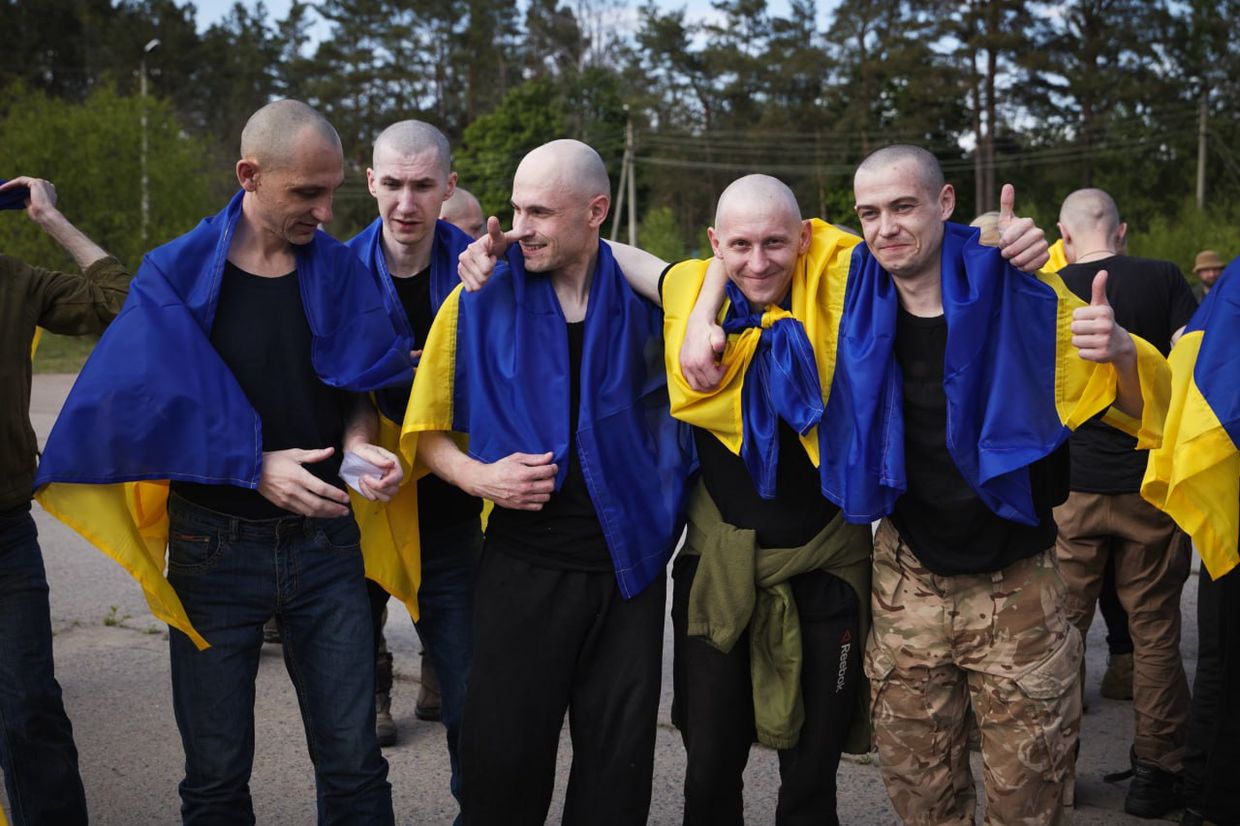
Ukrainian prisoners of war (POWs) were released from captivity in a prisoner exchange with Russia. (President Volodymyr Zelensky / Telegram)
“The deliberate killing of prisoners of war is a gross violation of the Geneva Conventions,” prosecutors stated, launching yet another investigation into what has become a pattern of systematic executions. As of December 2024, Ukrainian authorities documented 177 such murders—a number that continues climbing with sickening regularity.
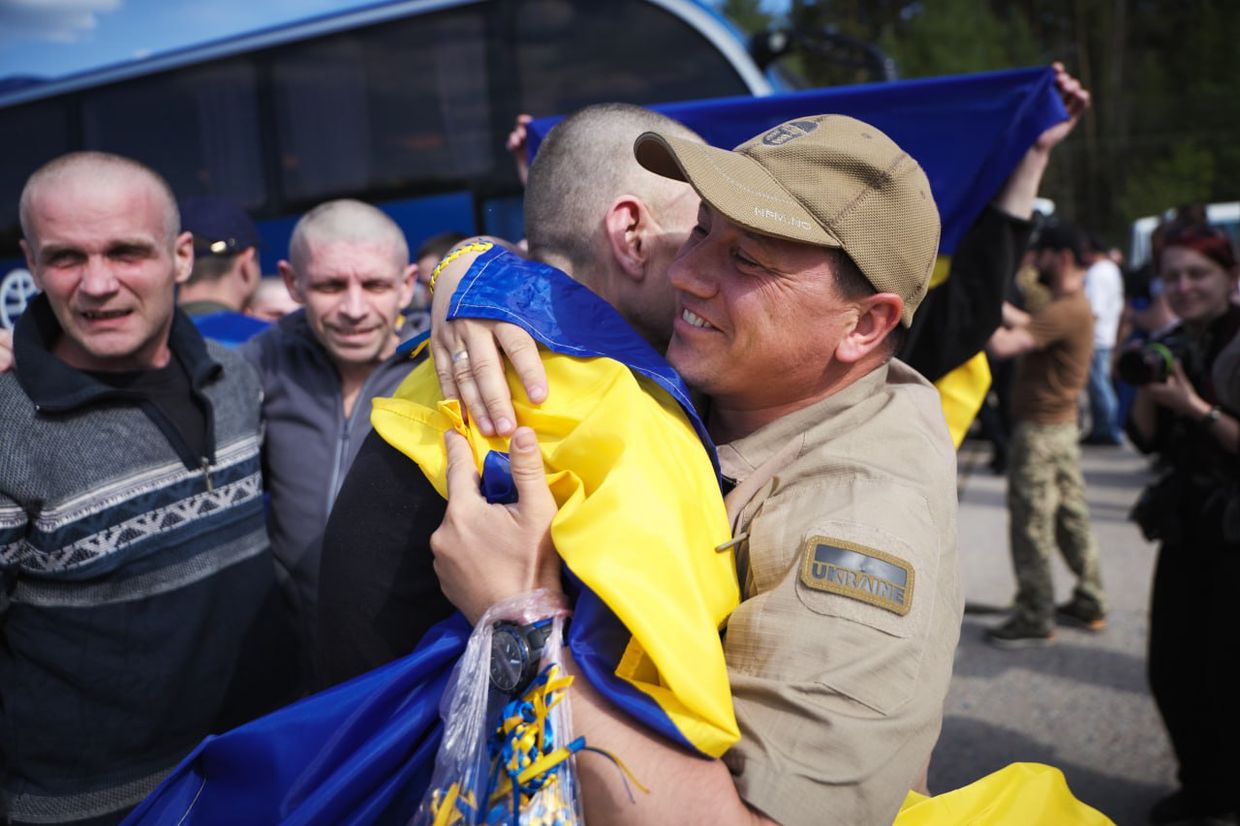
Ukrainian prisoners of war (POWs) were released from captivity in a prisoner exchange with Russia. (President Volodymyr Zelensky / Telegram)
The executions follow mounting evidence, including CNN’s May 21 report of intercepted audio where a Russian commander ordered POW killings. UN Special Rapporteur Morris Tidball-Binz’s assessment cuts through diplomatic niceties: such frequent executions cannot occur without orders or consent from the highest commanders, including Putin himself.
Strike on the War Machine: Ukraine Hits Factory Producing Iskander Components
Ukrainian forces delivered a precision blow to Russia’s military production, striking the Energiya enterprise in Yelets, Lipetsk Oblast. “The target was hit… a series of explosions were recorded,” Ukraine’s General Staff confirmed, noting the facility’s unique role as Russia’s sole manufacturer of batteries for glide bomb correction modules.
The sanctioned factory produces critical components for Iskander ballistic missiles, cruise missiles, and electronic warfare systems. “The shutdown of the Energiya public company may leave some of the Russian occupiers’ military equipment and weapons without critical batteries,” the General Staff assessed. Lipetsk Governor Igor Artamonov’s claim that debris merely fell on an “industrial zone” contrasted sharply with geolocated footage showing significant fires at the plant.
Night of Terror: 175 Drones and Missiles Turn Kyiv’s Sky Into Battlefield
As prisoner exchanges proceeded during daylight, darkness brought a different Russian message. Starting at 10 p.m. on May 23—mere hours after 390 Ukrainians returned home—explosions rocked Kyiv as 175 Shahed drones and decoy drones, plus Iskander-M ballistic missiles, descended upon Ukraine.
The capital bore the brunt: drone debris rained across Holosiivskyi, Shevchenkivskyi, and Sviatoshynskyi districts. A five-story building in Solomianskyi caught fire, sending seven to hospitals. In Obolonskyi, flames engulfed balconies from the third to sixth floors of a residential building, while a shopping center sustained damage. By dawn, 15 civilians required medical attention—some for physical wounds, others for the invisible scars of shock.
Ukrainian air defenses claimed 91 drones downed, with 59 more “lost” to electronic warfare. The attack’s timing—beginning as freed prisoners reunited with families—sent a clear message about Russia’s commitment to “peace.”
Odesa Port Bloodshed: Ballistic Missiles Kill Two at Ukraine’s Food Lifeline
Two Russian ballistic missiles struck Odesa’s port infrastructure at midday on May 23, killing two and wounding seven, with four in serious condition. The strikes targeted purely civilian infrastructure, damaging engine rooms and shattering windows while destroying critical equipment.
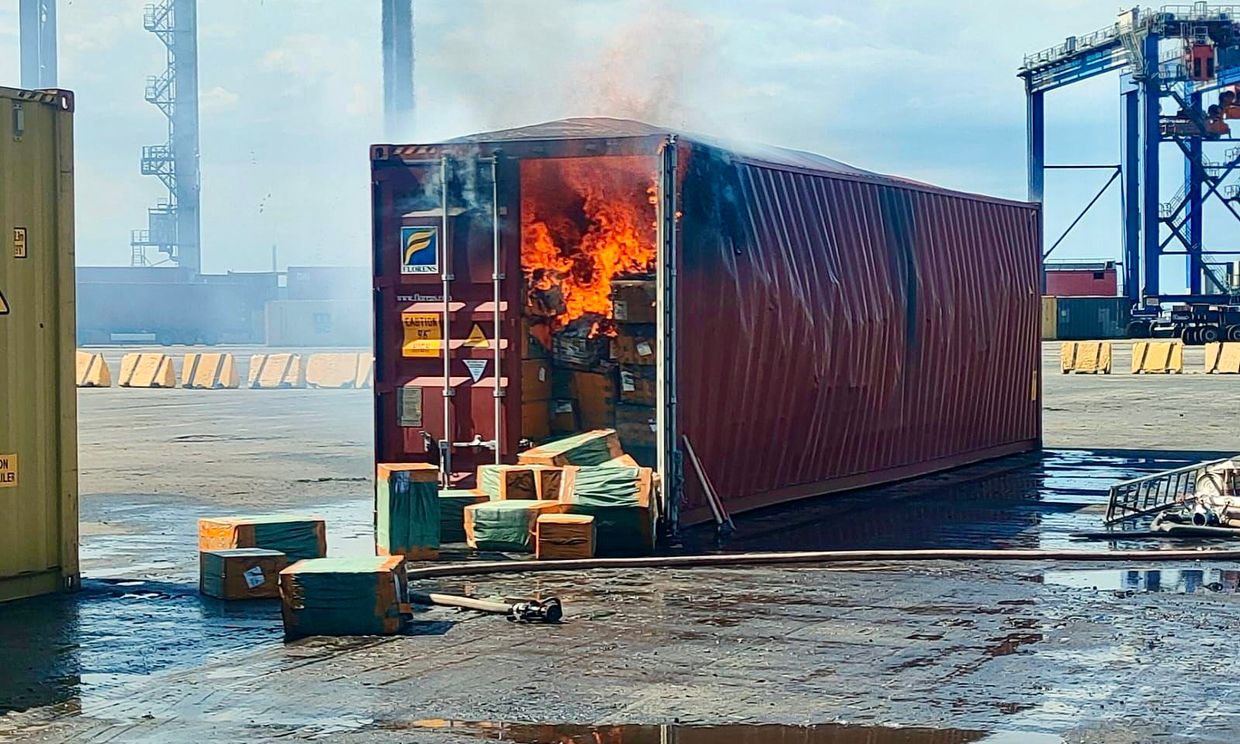
Aftermath of a Russian ballistic missile attack on Ukraine’s southern port city of Odesa. (Oleksiy Kuleba / Facebook)
“It was a normal working day in a normal Ukrainian port,” Infrastructure Minister Oleksiy Kuleba wrote. “There was not a single military facility, only civilian infrastructure.” The attack on this crucial Black Sea gateway—vital for global food security—adds to a grim tally: 400 pieces of port infrastructure damaged or destroyed, 30 ships hit, 106 civilians injured in port attacks since February 2022.
Putin’s Migrant Tracking App: Placating Ultranationalists While Preserving Labor Pipeline
Vladimir Putin signed legislation on May 23 authorizing an experimental mobile application to monitor migrants in Moscow City and Oblast—a system forcing certain populations to register and provide real-time location data to the Interior Ministry. Migrants attempting to conceal their whereabouts face deportation under the program, which runs from September 2025 to 2029.
The move represents Putin’s delicate balance between appeasing ultranationalists demanding harsher restrictions and maintaining access to migrant labor crucial for both the economy and military recruitment. Investigative Committee Head Alexander Bastrykin’s announcement of a new division for investigating migrant crimes signals the regime’s dual approach: surveillance for control, integration for exploitation.
The Vatican Rejection: Lavrov Dismisses Papal Peace Mediation
Russia’s rejection of the Vatican as a negotiation venue came wrapped in religious rhetoric. Lavrov claimed it would be “unrealistic” and “uncomfortable” for representatives of “two Orthodox countries” to meet on Catholic ground, accusing Kyiv of “destroying” the Ukrainian Orthodox Church—a reference to Ukraine’s 2018 creation of an autocephalous church independent from Moscow.
The dismissal follows Trump’s suggestion and Pope Leo XIV’s willingness to host talks. Lavrov’s invocation of centuries-old Orthodox-Catholic tensions to reject a peace venue reveals how Russia weaponizes religion alongside politics, using any pretext to avoid meaningful negotiations.
Battlefield Dynamics: Incremental Gains Amid Strategic Stalemate
Across multiple fronts, the war’s grinding nature continued with marginal territorial changes. Ukrainian forces advanced in northern Toretsk, geolocated footage confirming progress in the embattled city. Russian forces claimed Odradne southwest of Kurakhove, with the 36th Separate Motorized Rifle Brigade credited for the capture.
In the Kupyansk direction, Russia claimed seizure of Radkivka, though Ukrainian forces reported destroying five of eight Russian motorcycles in one assault—illustrating the small-scale, high-attrition nature of current operations. A Ukrainian brigade spokesperson noted Russian prioritization of establishing Oskil River crossings, while defenders in Toretsk reported intensified use of fiber-optic drones resistant to electronic warfare.
Economic Warfare: EU Reimposes Agricultural Quotas as Support Wavers
The European Union’s decision to reintroduce import quotas on Ukrainian agricultural products starting June 6 marks a significant shift in wartime support. The European Commission approved the measure on May 22, with no votes against but notable abstentions from Sweden, Czech Republic, Denmark, Estonia, Finland, Germany, Ireland, and Lithuania.
The move follows protests by European farmers, particularly in Poland, arguing that duty-free Ukrainian imports depress local prices. For Ukraine, whose agricultural exports provide crucial wartime revenue, the decision represents a economic blow as the duty- and quota-free regime introduced in June 2022 expires.
Finland on Alert: Russian Aircraft Violate Airspace as Border Tensions Mount
Two Russian military aircraft suspected of violating Finnish airspace on May 23 prompted Defense Minister Antti Hakkanen to declare: “We take the suspected territorial violation seriously.” The incident follows Major General Sami Nurmi’s warning that Russia has begun “moderate preparations” for infrastructure near Finland’s 1,300-kilometer border.
Polish forces separately intercepted a Russian Su-24 bomber over the Baltic Sea on May 22, with Defense Minister Wladyslaw Kosiniak-Kamysz calling the Russian maneuvers “dangerous and intentional.” The provocations fit a pattern of Russian testing of NATO boundaries, from disabled transponders to aggressive flight patterns near alliance territory.
Murder in Madrid: Ex-Yanukovych Aide Portnov Shot Dead After Ukraine Visit
Andriy Portnov, former deputy chief of staff to ousted president Viktor Yanukovych, was shot at least five times outside Madrid’s American School on May 21—just days after visiting Ukraine and reportedly meeting top law enforcement officials. The killing of this U.S.-sanctioned figure, known for maintaining influence over Ukraine’s judiciary even after 2014, adds another layer to the war’s shadow conflicts.
Three bullets struck Portnov, including a fatal headshot. His recent Ukraine visit on May 17-18, despite being a fugitive who fled after Euromaidan and again after the 2022 invasion, raises questions about his activities and potential enemies. The Security Service of Ukraine had investigated him for alleged involvement in Crimea’s occupation, though the treason case was later closed.
Zaluzhny’s Stark Assessment: No Miracles, Only High-Tech Survival
Former Commander-in-Chief and current UK Ambassador Valerii Zaluzhny delivered a sobering message via video on May 22: “I hope there is no one left in this hall still waiting for a miracle—for some white swan to bring peace to Ukraine, restore the borders of 1991 or 2022.” His prescription: Ukraine can only wage a “high-tech war of survival” using minimal human and economic resources.
“Ukraine is not capable of fighting another war in terms of demography and economy,” Zaluzhny stated, arguing that victory requires destroying Russia’s military-economic potential. His assessment that Russia will continue attacking as long as it has resources underscores the grinding reality facing Ukraine’s leadership.
Infrastructure Under Fire: Russian Strikes Kill Seven, Wound Twenty Nationwide
Across Ukraine on May 23, Russian attacks claimed seven lives and wounded twenty. In Donetsk Oblast, three died in Kostiantynivka, Pokrovsk, and Raihorodok. A utility worker in Kupiansk, Kharkiv Oblast, succumbed to injuries from a guided bomb attack. Kherson Oblast saw three killed and six wounded as 43 settlements came under fire.
Ukrainian air defenses intercepted 91 of 175 drones, with 59 neutralized by electronic warfare. The strikes damaged a business enterprise in Poltava Oblast, leaving 2,000 without power, while Odesa Oblast reported two injuries from drone attacks. Each casualty represents not just a statistic but a family shattered, a community wounded.
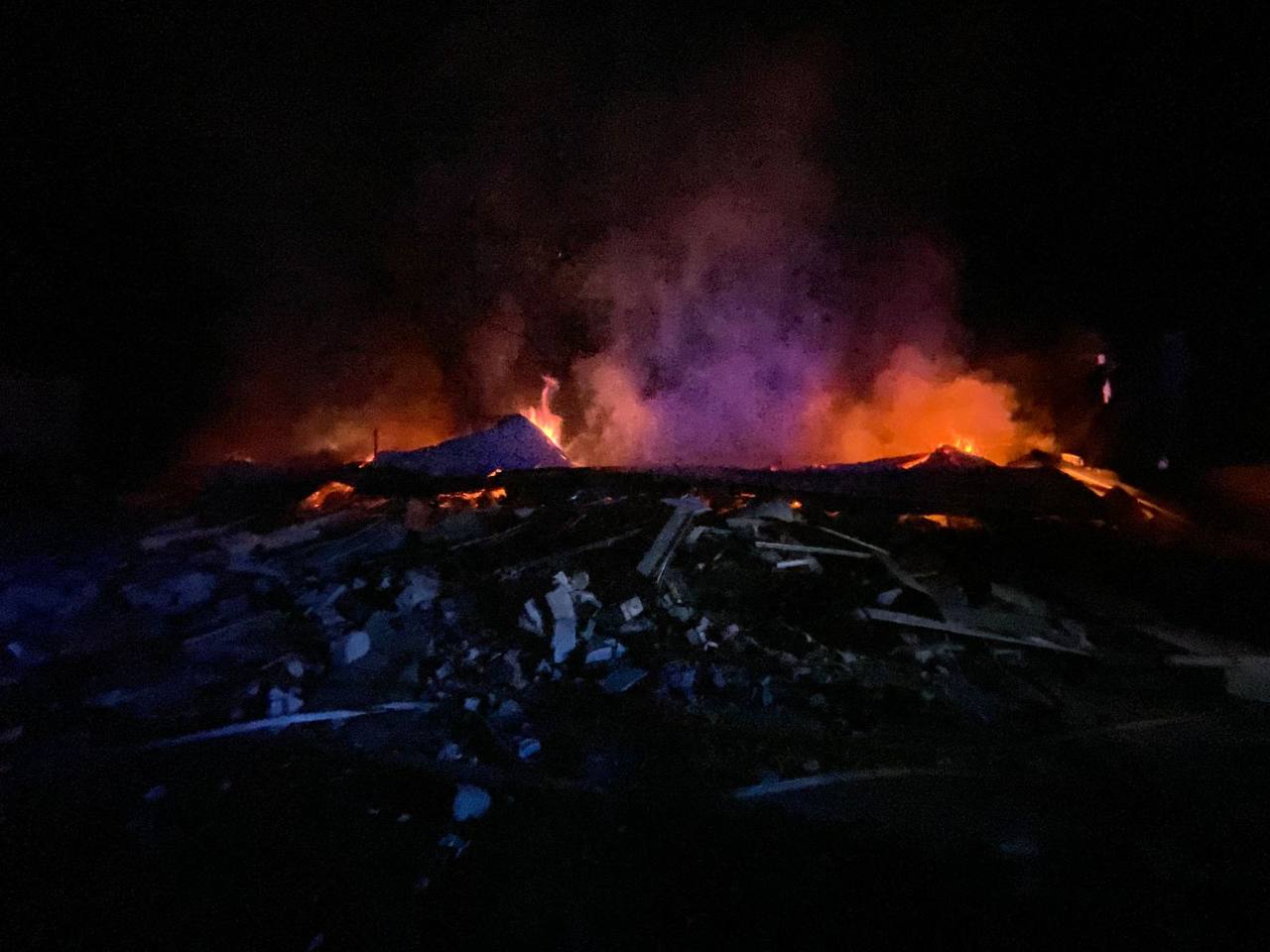
The aftermath of an overnight Russian drone attack on Poltava Oblast, Ukraine. (Volodymyr Kohut/Telegram)
Looking Ahead: The Architecture of Perpetual Conflict
As May 23 drew to a close, the day’s events revealed the fundamental incompatibility between Russian demands and Ukrainian survival. Lavrov’s insistence on perpetual political control over Ukraine, coupled with continued POW executions and massive aerial assaults even as prisoners were exchanged, demonstrates Moscow’s vision: not peace, but submission.
The return of 390 souls from captivity provides a glimmer of humanity amid the darkness, yet 7,610 more Ukrainians remain in Russian hands. As the EU wavers on support and Russia tests NATO boundaries from Finland to Poland, Ukraine faces not just a military struggle but a test of Western resolve. The strike on Russia’s missile component factory shows Ukraine’s growing precision in targeting war production, yet the night’s 175-drone assault proves Moscow’s capacity for terror remains undiminished. In this war of attrition, measured in missiles intercepted and lives exchanged, the architecture of perpetual conflict hardens with each passing day.
